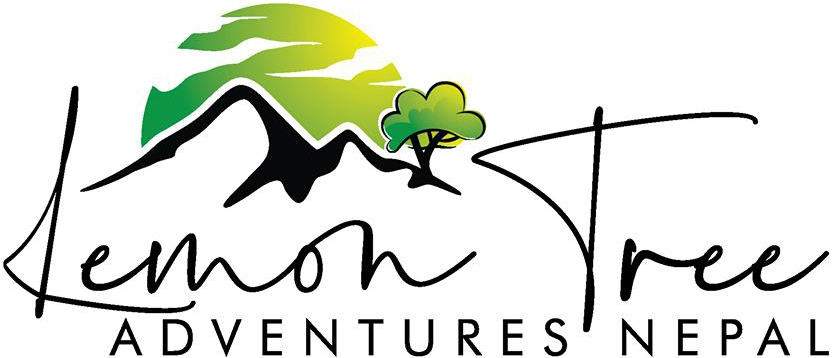Nepal and spirituality have a very intimate relation with each other. Spirituality defines the very existence of this beautiful country that resides on the lap of the Himalayas. Though previously a Hindu country and now a secular country, Nepal has come a long way ahead both politically and spiritually. Spirituality is the first and foremost attribute to help mark Nepal in the global tourism map. Nepal as country is an amalgamation of diverse religious beliefs and practices, cultural engagements and spirituality. One can embark on a spiritual journey in Nepal as Nepal is home to century old practices of yoga, meditation, Ayurveda, cultural practices and religious practices. Nepal widely follows Hinduism and Buddhism as religions but other religions and religious beliefs are also practiced freely. You can sense the spiritual side of Nepal the minute you arrive. Be it the aroma of incense lightened at the temples, the colorful prayer flags strung along the surroundings of Buddhist shrines or the decorative mandalas outside the newari localities.
Pashupatinath Temple in Kathmandu
Situated at the bank of Bagmati river amidst the hustle and bustle of the city is Pashupatinath temple. Pashupatinath temple is listed as the UNESCO World Cultural heritage site since 1979. Pashupatinath with two tired golden roofs and four silver doors is the temple of Hindu god “Lord Shiva”. Since the temple holds a very high significance for Hindu pilgrims, every year tens of thousands of people visit pashupatinath for pilgrimage. At the banks of Bagmati one can also observe the cremation taking place in accordance with the Hindu rituals.
Lumbini- Birthplace of the Buddha
Lumbini is the most sacred shrine for Buddhists around the world because they regard Lumbini to be the birthplace of Gautam Buddha. Tourists flood in all year round in lumbini to pray, meditate and pay homage to Buddha. The exact spot where Buddha was born is inside Mayadevi temple which dates back to 2,200 years. There are also many beautiful monasteries built by countries all around the world like Srilanka, China, Vietnam, Japan, Myanmar, Germany, France etc
Living Goddess Kumari
Regarded as the living goddess, a young Newari prepubescent girl from Shakya or Bajracharya clan is chosen by special and extremely strict selection process to represent as goddess kumari. This tradition was started by a Malla king back in 17th century. Goddess kumari resides at Kumari ghar in Kathmandu durbar square. The young girls once they reach puberty are then replaced by another chosen one. Every year during late August or early September, in the festival of Indra Jatra goddess kumari is bought out on a chariot from the kumari ghar and the chariot is pulled through the small alleys of old Kathmandu.
Muktinath Temple
Muktinath Temple is located at the altitude of 3710m enveloped by snowcapped mountains in Mustang district. This temple holds equal significance to both Hindu and Buddhist pilgrims. The temple according to Hindus is the temple of Lord Vishnu because according to Hindu mythology it was here that he got salvation from a curse whereas, the Buddhists regard this place as the place their guru Rinpoche (Padmasambhava) came to meditate. There are 108 water spouts inside the
Temple premises known as Mukti Dhara where the chilly waters from Gandaki flows. It is believed to bring salvation to those who bathe under all these 108 spouts.
Efforts have begun to exploit the abundant possibilities for spiritual tourism in Nepal. The matter was proposed during the 3rd edition of Himalayan Travel Mart underway in the Kathmandu. Accordingly, a transborder deliberation took place about spiritual tourism in the major session of the conference on June 8 2019. Renowned religious preachers from Nepal, India and Bhutan delivered lectures on this occasion. Indian spiritual guru Shree Shivakripananda Swami gave a special lecture. Many Experts presented on the spiritual tourism and possibilities in Nepal. Spirituality from the Top of the World and Spiritual Tourism in the Himalaya was the session leads for the deliberations.
Many spiritual tourists in Kathmandu place much emphasis on intellectual knowledge, and spend much time reading about philosophical themes. They are rarely seen performing pujas in temples, offering food or money in holy sites, or carrying the prayer wheels around the white domes of the stupas. If noticed at all, these aspects are considered by many tourists as being more of an integrated part of the Nepali culture, rather than a part of the religious or spiritual conceptual area they view themselves as inhabitants of. The tourists pay entrance fees to enter the large holy sites promoted in the tourist books, but most leave smaller temples on street corners, more frequently visited by Nepalese, unvisited. Many spiritual tourists also utilize a ‘pick and mix’ approach, which characterizes a New Age orientalist approach to Asian traditions, personalizing a religious practice to suit one’s own interests. This entails disregarding the context and the belief systems in which the practice originated, to selectively choose which practice suits the individual herself.
The very use of the term ‘spiritual’ preferred by so many of the tourists, entails positioning themselves a certain distance from the religious context in which the practice originated. They do not choose one religious system, but ‘pick and mix’ practices useful or beneficial to them in the given context. The ideas that these tourists bring with them when arriving in Kathmandu, their demands of spiritual centers offering courses on activities such as yoga and meditation, and the effort of people in Kathmandu to supply these tourists with what they want, are all expressions of a religious and spiritual discourse present in Kathmandu.





